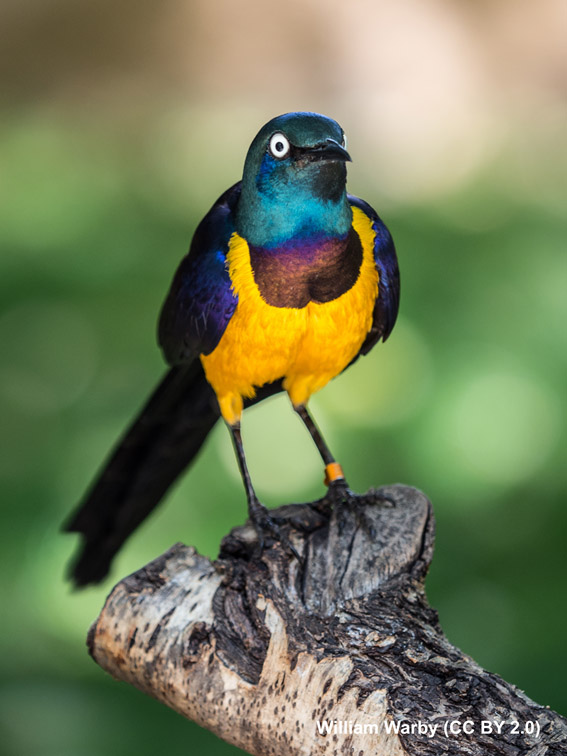Pigments are largely responsible for the appearance of organisms. Most biological pigments derive from the metabolism of shikimic acid (melanins), mevalonic acid (carotenoids) or levulinic acid (porphyrins), which thus generate the observed diversity of external phenotypes. Starlings are generally dark birds despite iridescence in feathers, but 10 % of species have evolved plumage pigmentation comprising bright colors that are known to be produced only by carotenoids. However, using micro-Raman spectroscopy, it was discovered that the bright yellow plumage coloration of one of these species, the Afrotropical golden-breasted starling Cosmopsarus regius, is not produced by carotenoids, but by vitamin A (all-trans-retinol). This is the first organism reported to deposit significant amounts of vitamin A in its integument and use it as a body pigment. Phylogenetic reconstructions reveal that the retinol-based pigmentation of the golden-breasted starling has independently appeared in the starling family from dark ancestors. This study thus unveils a unique evolution of a new class of external pigments comprised by retinoids. información[at]ebd.csic.es: Galván et al (2019) Unique evolution of vitamin A as an external pigment in tropical starlings. J Exp Biol doi: 10.1242/jeb.205229
http://jeb.biologists.org/content/early/2019/05/16/jeb.205229

 Las altas temperaturas están provocando que las lagunas y las marismas de Doñana pierdan agua rápidamente
Las altas temperaturas están provocando que las lagunas y las marismas de Doñana pierdan agua rápidamente




